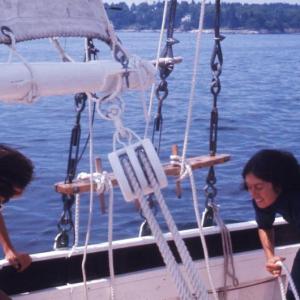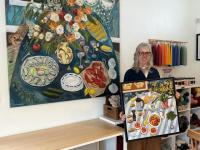Me and the Mary E, Part 2
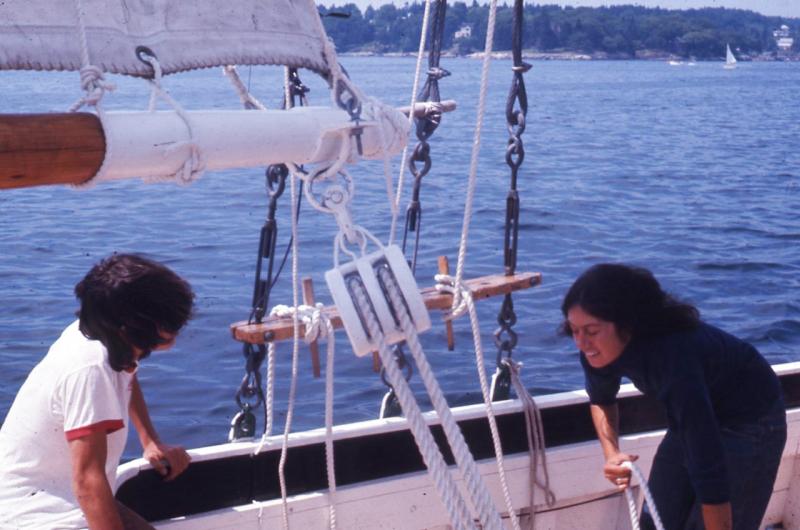 Teaching my brother Pete the ropes. Photo property of Suzi Thayer
Teaching my brother Pete the ropes. Photo property of Suzi Thayer
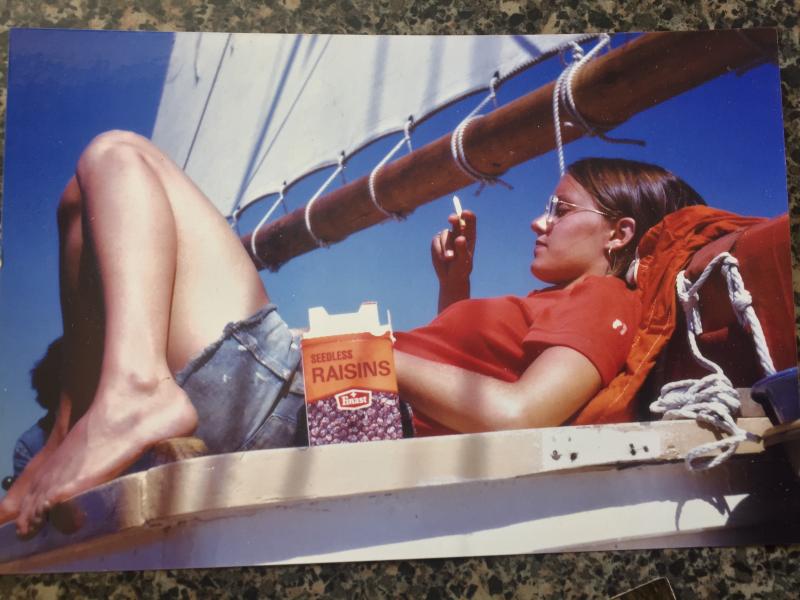 My bestie, Heidi Hodgkins (now Paillon) relaxing during a day on the Mary E. SUZI THAYER/Boothhbay Register
My bestie, Heidi Hodgkins (now Paillon) relaxing during a day on the Mary E. SUZI THAYER/Boothhbay Register
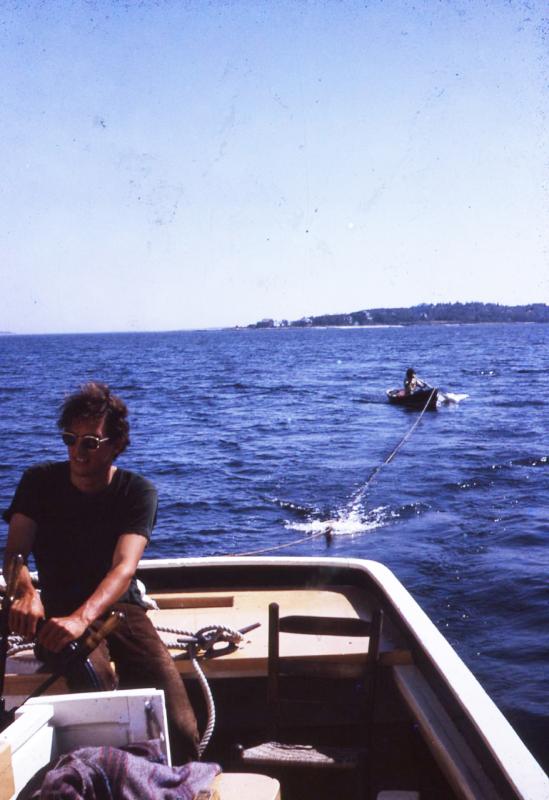 Friend and deckhand Bill Coyne at the helm. That’s me in the dinghy. Photo property of Suzi Thayer
Friend and deckhand Bill Coyne at the helm. That’s me in the dinghy. Photo property of Suzi Thayer
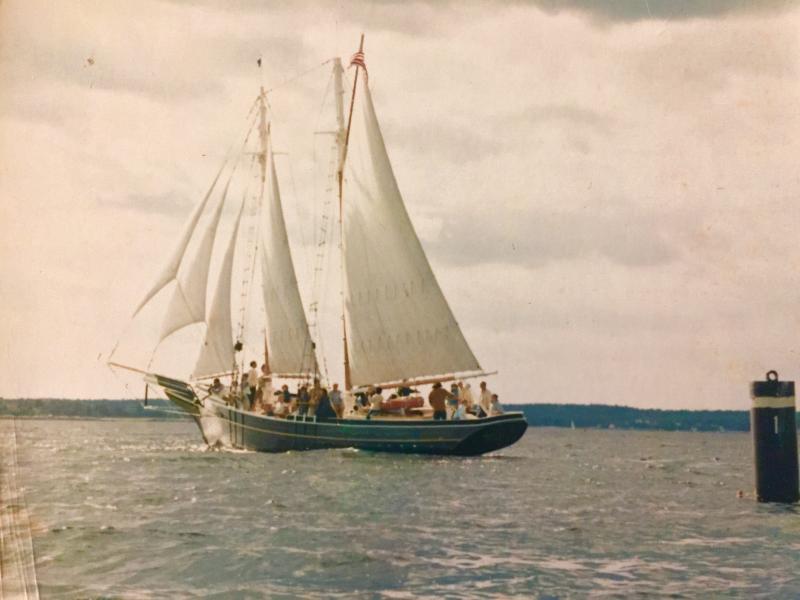 The Mary E under full sail. Courtesy of Lucinda (Morse) Witt
The Mary E under full sail. Courtesy of Lucinda (Morse) Witt
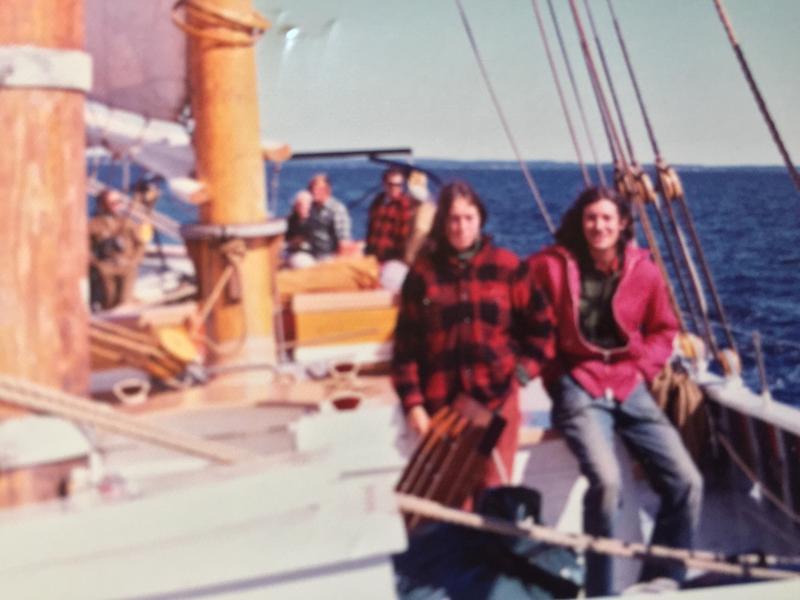 Stan and me on another schooner in Rockport. I don’t look very happy. Photo property of Suzi Thayer
Stan and me on another schooner in Rockport. I don’t look very happy. Photo property of Suzi Thayer
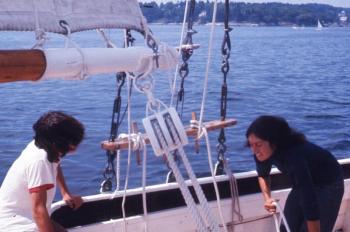 Teaching my brother Pete the ropes. Photo property of Suzi Thayer
Teaching my brother Pete the ropes. Photo property of Suzi Thayer
 My bestie, Heidi Hodgkins (now Paillon) relaxing during a day on the Mary E. SUZI THAYER/Boothhbay Register
My bestie, Heidi Hodgkins (now Paillon) relaxing during a day on the Mary E. SUZI THAYER/Boothhbay Register
 Friend and deckhand Bill Coyne at the helm. That’s me in the dinghy. Photo property of Suzi Thayer
Friend and deckhand Bill Coyne at the helm. That’s me in the dinghy. Photo property of Suzi Thayer
 The Mary E under full sail. Courtesy of Lucinda (Morse) Witt
The Mary E under full sail. Courtesy of Lucinda (Morse) Witt
 Stan and me on another schooner in Rockport. I don’t look very happy. Photo property of Suzi Thayer
Stan and me on another schooner in Rockport. I don’t look very happy. Photo property of Suzi Thayer
So last week I left you tied to a mooring off Monhegan on a moonlit late August night. Sorry about that, but there are worse places. And I like to think it was a clear, starry, moonlit night, but I honestly have no recollection of that. I do know it wasn’t raining because I was sleeping on the open deck.
After Stan got back on board and the girls were all safely ensconced in the bunks below decks, I told him, laughingly, what they had asked me: “Are you and Stan married?” I had answered them with a little white lie, taking into account their tender ages, and the sleeping arrangements on the boat. I said we were engaged. They were thrilled.
We weren’t engaged, but we were definitely smitten. We had only known each other for a little over two months.
Stan got serious, and asked why I was laughing. Then he proposed. No diamond ring or flowers, but romantic none-the-less. I said yes, and we were married on Sept. 20 at my family cottage in Cushing.
During that first summer on the Mary E, Stan met a British captain, a world-class sailor named Mel Clark, on a 60-foot ketch, the Symphoni. That fall, we sailed to the Caribbean as crew on that beautiful boat that had been built for a crown prince of Sweden. It was another life-changing adventure that included sailing through a hurricane off New York, and a midnight watch in the Bermuda Triangle.
We spent part of that winter on different boats, mostly on St. Thomas, and came back to Maine in the late winter/early spring to build a small house on the shore in Stockton Springs, where Stan’s parents had given us a piece of land.
That’s a story in itself. Stan bought a book, “How to Build a House,” at an old used book barn in Searsport. We built the house ourselves, lugging lumber and bags of cement down the long (I’m thinking quarter-mile, but that may be an exaggeration) grass/dirt road. Stan built a cute little outhouse, next to a stream that ran by the house, and we got an old Ideal Clarion wood stove for heat and cooking.
We continued working, and living on the Mary E for the next two summers, taking people out for half-day, day and weeklong trips. We got “uniforms.” Stan, a deckhand named John, and I went to L.L.Bean one night around midnight for them. Bob Morse had tired of our worn-out, holey-kneed jeans and tired old T-shirts, and handed us some cash, telling us to buy whatever we wanted, but to make it look at least semi-professional.
We got baggy, lightweight L.L.Bean jeans, one green and one mustard-colored chamois shirt each, and striped suspenders. Morse approved.
I wish I remembered more about the details of day-to-day life aboard that big old schooner, like the day we were sailing up the Damariscottta River with a family of three, and a whale about the same length as the 50-foot boat surfaced right beside us and swam alongside for some time.
I remember the summer Melanie and Welles Steane invited us to use their dock at Rocktide as a home base, graciously extending an invitation to their continental breakfasts in the restaurant.
I remember the feeling of the boat rising over the swells when it got rough out on the ocean, and the rush of seeing the bowsprit pointing toward the sky before settling back down into the trough.
I remember that Stan used to sail up to docks instead of using the engine, as most big schooners do.
But what I remember most is the feeling I’d get sitting on a rail holding onto a stay, or out at the tip of the long (20-foot?) bowsprit, or near the top of one of the masts in the “crow’s nest.” I remember the smell of the ocean and the feel of the wind blowing and the sun on my face. It sounds like I’m waxing poetic, but it’s true.
We sailed to the Caribbean again the next two falls on the Symphoni after putting the Mary E to bed.
I often wonder how my life might have been different if I hadn’t gotten the job on the Mary E. The three summers and one winter I spent living aboard and sailing her were life-changing. I learned a lot more than just how to sail an old schooner. I learned that I was capable of so much more, both physically and mentally, than I ever would have thought possible had I not been given that opportunity.
There’s no doubt that the Mary E helped shape me into the person I am today.
I have lived on dry land since, but Stan has never wavered in his resolve to live a life on the ocean. He has sailed all over the world and lives on a sailboat today somewhere in the Caribbean. He sent an email a few days ago saying he’ll be stopping by Boothbay Harbor in a few weeks, so you may see him around town, probably on a deck drinking a rum and coke.
I asked him to share some of his memories for this story. Here’s what he replied:
“Proposing on Monhegan Island. Sailing in and out of Rocktide ... to the chagrin of the locals. Our boat dog, Cappy — a Springer Spaniel. Me, trying to look older by smoking a pipe ... did not work! Charter with Norman Cousins, the editor of Saturday Review, and visiting Buckminster Fuller on Bear Island.”
I missed that one. Stan reminded me that I was getting ready for our wedding. I remember him telling me about having dinner with those two brilliant and innovative men. He said when he told them he was getting married, at the tender age of 21, they tried to talk him out of it, and asked him why. He replied, “Because I love her.” Simple.
Stan and I were divorced in 1974, but I wouldn’t trade my time with him or the Mary E. Great memories.
When I see a young woman working on a big sailboat now I am envious. I think, “Wow, lucky her.” It takes a minute before I realize that I used to be her. Lucky indeed.
Event Date
Address
United States

